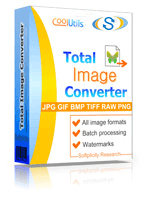1) Upload CIT file to convert
Drop files here, or Click to select
2) Set converting CIT to PDF options
3) Get converted file

 Total Image Converter
Total Image Converter
 JPEG, TIFF, PSD, PNG, etc.
JPEG, TIFF, PSD, PNG, etc. Rotate Images
Rotate Images Resize Images
Resize Images RAW photos
RAW photos Watermarks
Watermarks Clear interface
Clear interface Command line
Command line💾 Upload Your File: Go to the site, click on «Upload File,» and select your CIT file.
✍️ Set Conversion Options: Choose PDF as the output format and adjust any additional options if needed.
Convert and Download: Click 👉«Download Converted File»👈 to get your PDF file.




| File extension | .CIT |
| Category | File |
| Description | The CIT image format, also known as the CalTech image format, is a binary file format used for storing monochrome or color images. It was developed by the California Institute of Technology and has a maximum file size of 4 gigabytes. CIT files contain image data in a raw format, which means they do not include any header or metadata information. Instead, the image data is stored as a continuous stream of bytes, with each pixel represented by a single byte for monochrome images or three bytes (red, green, and blue) for color images. The CIT format uses a little-endian byte order, which means that the least significant byte is stored first. This is important to consider when reading or writing CIT files on systems that use a different byte order. In addition to storing image data, the CIT format supports optional compression using a variant of the Lempel-Ziv-Welch (LZW) algorithm. This can help reduce the file size of CIT images, but can also increase the time required to read or write the file. Overall, the CIT format is a simple and efficient way to store image data, particularly for scientific and technical applications that require precise control over image data. |
| Associated programs | Total Image Converter |
| Developed by | Intergraph Corporation |
| MIME type | |
| Useful links | |
| Conversion type | CIT to PDF |
| File extension | |
| Category | Document File |
| Description | Adobe Systems Portable Document Format (PDF) format provides all the contents of a printed document in electronic form, including text and images, as well as technical details like links, scales, graphs, and interactive content. You can open this file in free Acrobat Reader and scroll through the page or the entire document, which is generally one or more pages. The PDF format is used to save pre-designed periodicals, brochures, and flyers. |
| Associated programs | Adobe Viewer Ghostscript Ghostview Xpdf CoolUtils PDF Viewer |
| Developed by | Adobe Systems |
| MIME type | application/pdf application/x-pdf |
| Useful links | More detailed information on PDF files |
Journeying from the CIT to PDF conversion process unveils an intriguing narrative of how technological advancements enhance the accessibility, compatibility, and longevity of digital content. It's an evolution that reflects the move from specialized, niche formats to universally recognized and accepted documentation standards.
CIT, standing for Intergraph Raster File Format, is associated with scanned content, primarily from the realm of computer-aided design (CAD) and mapping. Originally designed for the Intergraph suite of software, CIT files played a pivotal role in ensuring that intricate design schematics and geospatial imagery remained in high quality. This format facilitated the preservation of essential details, catering to professionals who needed utmost precision in their digital records.
In stark contrast, PDF, or Portable Document Format, emerges as a universal champion of digital documentation. Developed by Adobe, PDF's genius lies in its ability to encapsulate text, graphics, and a plethora of other information into a singular, cohesive unit. Its cross-platform compatibility, coupled with its ability to preserve the original content's layout and appearance, makes it an ideal choice for a vast range of documentation needs, from academic papers to business reports and beyond.
Delving into the conversion from CIT to PDF reveals various motivations and benefits:
Beyond the technological merits, this conversion embodies the broader trend of democratizing information access. By moving from the specialized confines of CIT to the widespread embrace of PDF, digital content, whether it be intricate design blueprints or complex map layouts, becomes more accessible to a larger audience. This transformation ensures that professionals and laypeople alike can interact, engage with, and benefit from the content without barriers.
In essence, the voyage from CIT to PDF represents a commitment to knowledge sharing, collaboration, and universal access. It's a testament to the power of technology in bridging gaps, breaking down silos, and fostering an environment where information flows freely, devoid of constraints. As we shepherd our CIT files into the expansive realm of PDF, we're not merely changing formats; we're championing a vision where every piece of knowledge, no matter its origin or intricacy, finds its rightful place in the global digital library.